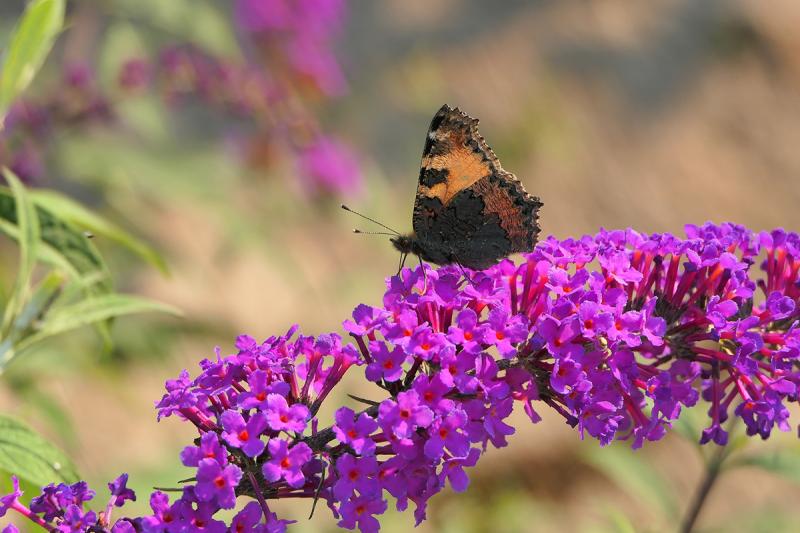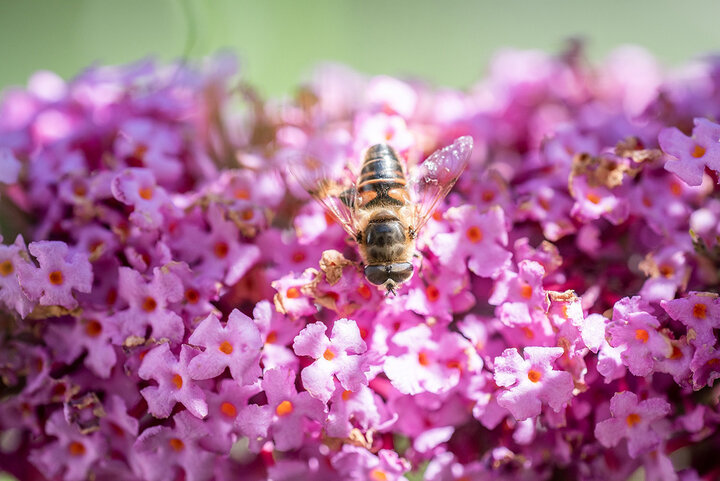Sarah Browning, Nebraska Extension Educator

An irresistible attraction for pollinators is the butterfly bush, Buddleia davidii. Photo by Pixabay.com.
An excellent way to attract butterflies to your garden is to plant annuals and perennials that are good nectar sources. Another irresistible attraction for butterflies is the butterfly bush, Buddleia davidii.

The leaves of the butterfly bush are 4 to 10 inches long and 1 to 3 inches wide. Upper leaf surfaces are grayish to bluish green. The undersides of the leaves are grayish white.
In addition to attracting butterflies, the fragrant flowers also lure bees to the garden. The small, 1/4 to 1/3 inch-wide flowers are borne on dense, 6 to 12 inch-long spikes (panicles). Flowering typically begins in early summer and continues until frost. Buddleia davidii cultivars possess a wide range of flower colors including white, yellow, pink, blue, violet, and purple. The flower panicles on some varieties are upright, while others have a graceful, arching form.
Butterfly bushes perform best in moist, well-drained soils in partial to full sun. Avoid wet, poorly drained sites. Also, select sites that provide winter protection. Butterfly bushes planted in open, exposed sites are more likely to be destroyed by harsh, winter weather.

Insects and diseases are generally not major problems. The biggest threat to the butterfly bush is our harsh winter weather.
While varieties of Buddleia davidii are the most widely planted butterfly bush in the midwest, the alternate-leaf butterfly bush (Buddleia alternifolia) is another possibility for home landscapes. This species is slightly more hardy than Buddleia davidii. As a result, it usually doesn't die back to the ground during winter. Plants are large, arching shrubs that grow approximately 10 feet tall. Lilac-purple flowers appear in June on the previous year's growth.
Acknowledgement - Our thanks to Don Jansen, former Nebraska Extension Educator, the author of the original version of this article.
Images by Pixabay.com.